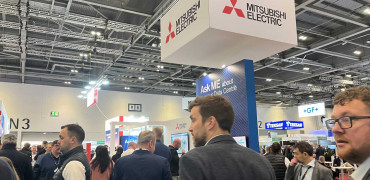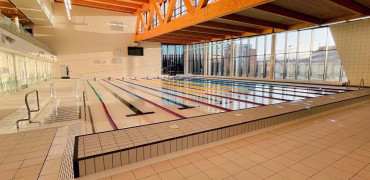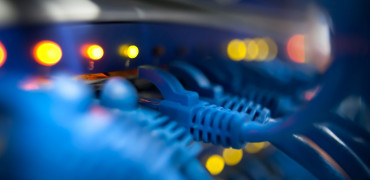In 2022, we saw some of the highest temperatures ever recorded in the UK.
As the mercury soared to 40 degrees Centigrade, some data centre managers were forced to use water sprinklers on air conditioning units to try to keep the heat under control.
With our connected world relying heavily on 24-7 availability, there is simply no room for failure in today's data centres.
One of the main factors data centre FMs have to contend with is cooling.
After the IT load, this is the most significant energy user in the building.
Changing to a modern chiller makes sense for better energy efficiency and a lower carbon footprint
The pressure of rising costs
And as energy costs rise, building managers are also facing greater calls to lower energy use wherever possible.
For data centre owners, and indeed anyone in high-energy using sectors such as process and manufacturing, finding the balance between preventing overheating equipment, energy and carbon footprint is a challenge.
A good place to start can be with the cooling equipment itself. Chillers have been the go-to solution for the industry for many years. They’re a well-known technology that has stood the test of time.
But there are several reasons to consider updating your chillers in 2023.
One of the most important drivers is to improve energy efficiency. Older chillers tend to be less efficient than newer models, which means they use more energy to produce the same amount of cooling.
This can lead to higher energy bills - and increased greenhouse gas emissions.
Lower GWP Refrigerants
Updating to a newer, more energy-efficient chiller can help reduce energy costs and lower the building's carbon footprint.
Mitsubishi Electric has designed and manufactured chillers for over forty years. The latest additions to our range reflect the needs of clients in data warehousing and industrial processes.
One of our first considerations for our new range of MECH Chillers has been the use of lower-GWP (Global Warming Potential) refrigerant. We selected R32 because it has 66% lower GWP than R410A and is easy to recycle.
And to optimise the performance of the R32 system, the chillers have variable speed drive (VSD) scroll compressors on board.
Taking control
The application of ‘smart’ technology in building services is fundamental to managing energy use while balancing requirements for cooling in IT and industrial environments.
Controls can monitor and adjust a building's HVAC system to ensure that it provides the right amount of heating or cooling to different areas of the building based on occupancy and weather conditions.
This reduces energy consumption by preventing systems from running unnecessarily or inefficiently.
With energy efficiency top of mind for most clients and building managers, Mitsubishi Electric’s new range is designed with advanced control options.
For example, the new Mitsubishi Electric MECH-iS-G07 is designed for data centres and process applications.
With our w-MEXT system and HPC software, users can control the entire system for optimum efficiency. And our integrated LAN logic function allows control of up to eight chillers in a single group, making it easier to optimise load distribution, alarm management and back-up or stand-by units.
Improved efficiency
In addition to this, building controls can help improve the energy efficiency of a building by providing real-time monitoring and control of its systems, allowing building managers to make informed decisions about how to operate the building in the most energy-efficient way possible.
Mitsubishi Electric’s Service and Maintenance team can support our chiller installations from commissioning to end-of-life, including remote monitoring for continuous peace of mind.
Changing to a modern chiller in 2023 makes sense for building owners looking for better energy efficiency and a lower carbon footprint.
With today's chiller technology, you can optimise energy efficiency and maintain the right indoor environment for your building.
Stuart White is M&E Contractor Business Development Manager.




